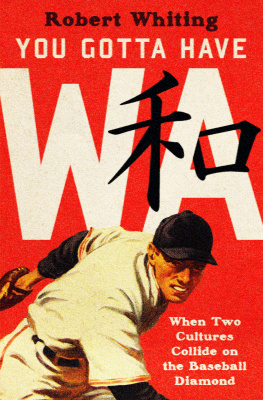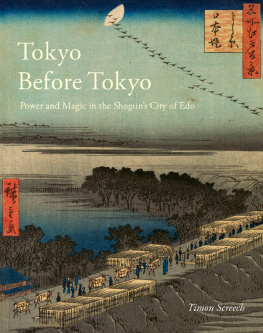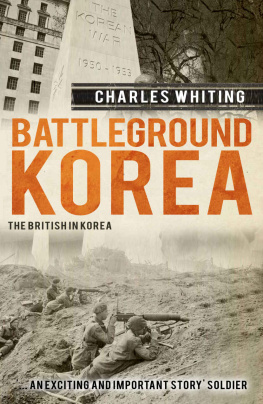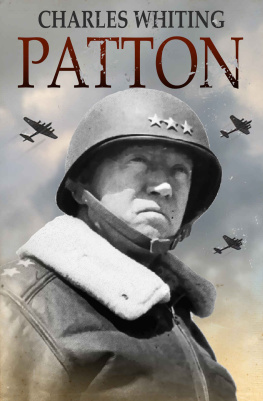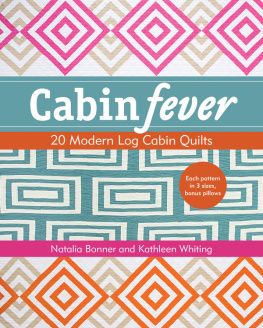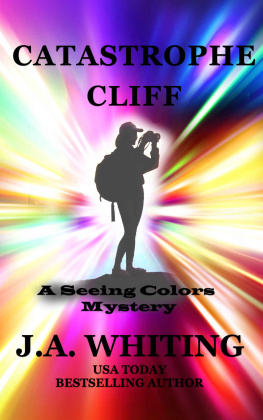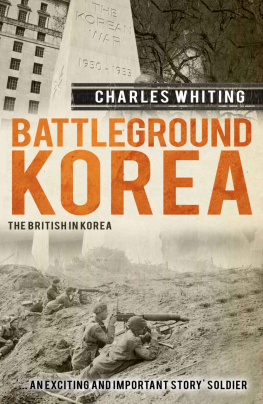Robert Whiting - Tokyo Junkie
Here you can read online Robert Whiting - Tokyo Junkie full text of the book (entire story) in english for free. Download pdf and epub, get meaning, cover and reviews about this ebook. publisher: Stone Bridge Press, genre: Detective and thriller. Description of the work, (preface) as well as reviews are available. Best literature library LitArk.com created for fans of good reading and offers a wide selection of genres:
Romance novel
Science fiction
Adventure
Detective
Science
History
Home and family
Prose
Art
Politics
Computer
Non-fiction
Religion
Business
Children
Humor
Choose a favorite category and find really read worthwhile books. Enjoy immersion in the world of imagination, feel the emotions of the characters or learn something new for yourself, make an fascinating discovery.
- Book:Tokyo Junkie
- Author:
- Publisher:Stone Bridge Press
- Genre:
- Rating:3 / 5
- Favourites:Add to favourites
- Your mark:
- 60
- 1
- 2
- 3
- 4
- 5
Tokyo Junkie: summary, description and annotation
We offer to read an annotation, description, summary or preface (depends on what the author of the book "Tokyo Junkie" wrote himself). If you haven't found the necessary information about the book — write in the comments, we will try to find it.
Tokyo Junkie — read online for free the complete book (whole text) full work
Below is the text of the book, divided by pages. System saving the place of the last page read, allows you to conveniently read the book "Tokyo Junkie" online for free, without having to search again every time where you left off. Put a bookmark, and you can go to the page where you finished reading at any time.
Font size:
Interval:
Bookmark:

About the Author
ROBERT WHITING is a best-selling, critically acclaimed author who has written extensively on Japan and Japanese-American relations. His books include Tokyo Underworld, The Meaning of Ichiro, and The Chrysanthemum and the Bat. His best-selling You Gotta Have Wa, a Pulitzer Prize nominee, has been required reading in the Japanese Studies departments of many American universities, as well as the Japan Desk in the US State Department.
His work has been featured in Sports Illustrated, Time, Smithsonian, The New York Times, The Wall Street Journal, Nikkei Asia Review, and the Japan Times as well as several Japanese publications, including Shukan Asahi, Bungei Shunju, and Daily Sports. He has published twenty-two books in Japanese and has also authored a manga series for Kodansha, which has sold 750,000 copies. Slugging It Out in Japan, an autobiography co-authored with former Tokyo Giants player Warren Cromartie, was the recipient of a New York Public Library award for educational merit. He has served for the past five years on the Board of Directors at the Foreign Correspondents Club of Japan, where he has been a member since 1982. At present, he writes a weekly column for the Yukan Fuji that is now in its fourteenth year.
Whiting has lived in Japan on and off for the past fifty years and is a graduate of Sophia University. Tokyo Underworld is currently under option to Legendary Global, where he will join Sherry Marsh and Terence Winter as an executive producer of a planned series based on the book.
Acknowledgments
The genesis of this book was a five-part series on the 1964 Olympics I wrote for the Japan Times in 2014, followed by an article in Foreign Policy comparing the preparations for the 1964 Games with the 2020 Games. The editors at Kadokawa Shoten, Satoshi Gunji, Tetsuya Sugahara, and Motofumi Ijuin, asked me to turn this material into a book, and since Kadokawa had published the best-selling Japanese-language editions of You Gotta Have Wa and Tokyo Underworld, I readily said yes, and Miko Yamanouchi at Japan Uni finalized the deal. I wound up with a 175,000 word manuscript, which Kadokawa published in the fall of 2017, translated into Japanese by Masayuki Tamaki, Japans leading sports journalist, who had also worked on Wa. For US publication I revised and shortened the MS, removing many of the Olympic-related segments as well as chapters on my work as a military electronic intelligence analyst for the NSA and CIA, while adding new and updated material on the city of Tokyo in general and on the Coronavirus in particular, the latter having reared its nasty little head while I was working on the final version of this book.
A number of people helped me in the process of putting this book together. They include Jack Gallagher, the former Japan Times sports editor who commissioned the original 1964 Olympics series, JT writer Ed Odeven, who copy-edited it, the writer-editor Mary Corbettmy BOD sidekick at the Foreign Correspondents Club of Japan who waded through the original draft, Nikkei Asia Review editor Gwen Robinson, and International Creative Management Partner Amanda Binky Urban. Jeff Kingston, the well-known Temple University professor and Japan author, read the MS and offered insightful comments. Peter Miller of Kamprint in Kamakura read several versions and offered trenchant analysis and encouragement. Tokyo management consultant Mitch Murata provided feedback on a number of occasions, as did securities and military affairs analyst Hiroki Allen. New York-based journalist David Roberts, the former academic physicist and diplomat who was my collaborator at Foreign Policy magazine, offered valuable advice, while China-based writer Don MacLaren read through the manuscript twice and corrected many mistakes. Douglas Victoria, a fellow traveler at Fuchu Air Station back in the day, offered helpful recollections. It was good to reconnect with him again. Peter OConnor offered research materials. FP editor Blake Hounshell helped iron out kinks in LDP- and Olympic-related articles. 1964 author Roy Tomizawa offered advice. Bryan Dunn and Kevin Novak offered libationary guidance. David Shapiro, who edited Tokyo Underworld and The Meaning of Ichiro, did another one of his thoroughly professional edits on the MS, while Japanamerica author Roland Kelts, who also set this project up with Peter Goodman at Stone Bridge, did a final edit. Mark Schreiber read the final version and offered several valuable suggestions for improvement. Peter and John Sockolov did a superb job preparing the text and the photographs for publication. I thank them all for their generous help and take the blame for any other errors that may still exist.
I also want to thank Kozo Abe of the Yukan Fuji and Hiroshi Naito at the Sankei Shimbun for their help in the long, arduous task of digging out photos and express my gratitude to the following individuals: Noriko Takahashi at WAttention, Bob Kirschenbaum of Pacific Press Service in Tokyo, the Andrew Roth Gallery in New York on behalf of Katsumi Watanabe, Noriyuki Suetsugu of Getty Images Japan, Pierre-Louis Denis at the William Klein studio in Paris, Bonnie Pong Mai-wa at Hitomi Watanabe photos, and Hiroko Moriwaki and Nakajima-san at the FCCJ. Also thanks to Shoko Nakajima at Kyodo and Mark Schreiber for the photos they provided.
Finally, a big arigatou to my wife Machiko and my sister Margo who provided moral support as well as old photos, and thanks to everyone in my extended family in the Kondo, Hayano and Kobaysahi clans in the Tokyo area and the Noble, Davis and Gruttadauro families in the US.
***
Unlike my previous works, this book has no footnotes or bibliography. It is a memoir after all. However, researchers who are interested in my sources are free to contact me and I will be happy to answer specific questions. You can find my contact information on my web page:
https://robertwhiting.com/
RW

The Soldier
Tokyo. Winter. 1962: The Most Dynamic City on Earth
At that time, the first thing that hit you on the streets of central Tokyo was the crowds. Enormous waves of people everywhere, men and women in long dark coats, bundled against the cold, bumping, jostling, a sea of black hair navigating streets clogged with automobiles and bicycles. Long queues formed on train station platforms. Commuter cars were so packed that uniformed platform pushers were required to get everyone inside and close the doors.
Then it was the construction, the level of which was simply off the charts. Everywhere you turned it seemed there was a building being put up or another one being pulled down. Crumbling sidewalks were ripped apart, roadways air-hammered into rubble, trucks whizzing by carrying dirt and building materials. Overhead, half-finished highways filled the sky, rebars and braided cables exposed. There was so much going on that it was a contact high just to stand there and watch it all.
The noise was omnipresent. A constant cacophony of auto horns, jack hammers, pile drivers, and trolley cars. Honk-honk. Rat-a-tat-tat. Wham. Boom. Clang-clang-clang. An electronic billboard sign erected at a Nishi-Ginza intersection in downtown Tokyo measured the sonic damage: 79. 81. 83. 86. Beside it stood a sign that read: BE MORE QUIET! THE NOISE AT THIS MOMENT: 88. STANDARD FOR RESIDENTIAL AREA: 50 PHONS. BUSY CORNERS: 70 PHONS. But the noise, meticulously measured though it was, never stopped.
Next pageFont size:
Interval:
Bookmark:
Similar books «Tokyo Junkie»
Look at similar books to Tokyo Junkie. We have selected literature similar in name and meaning in the hope of providing readers with more options to find new, interesting, not yet read works.
Discussion, reviews of the book Tokyo Junkie and just readers' own opinions. Leave your comments, write what you think about the work, its meaning or the main characters. Specify what exactly you liked and what you didn't like, and why you think so.


